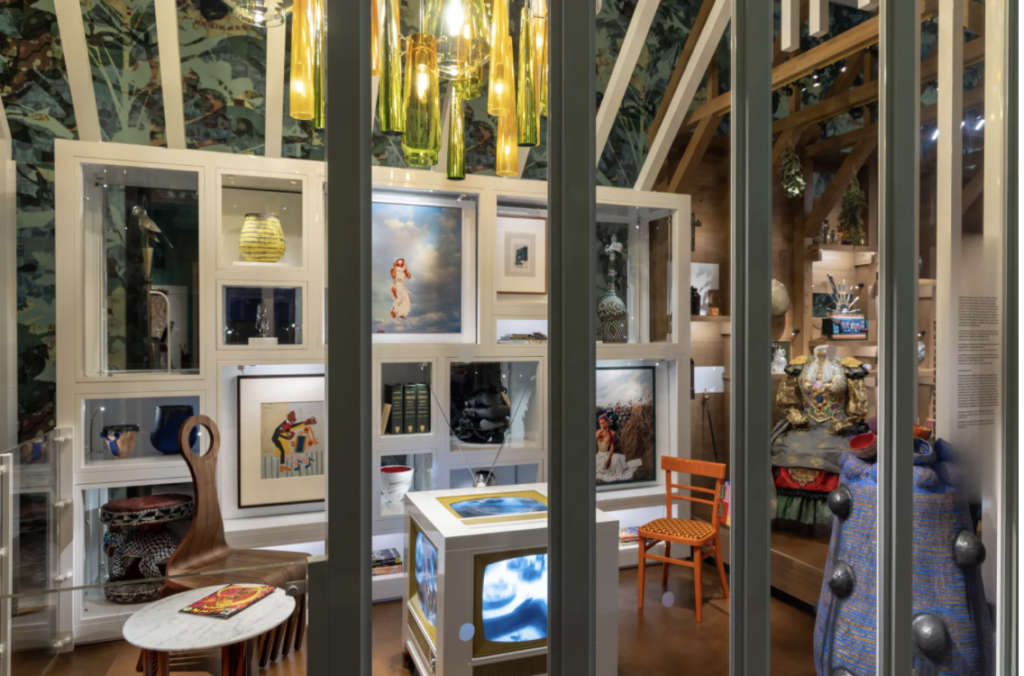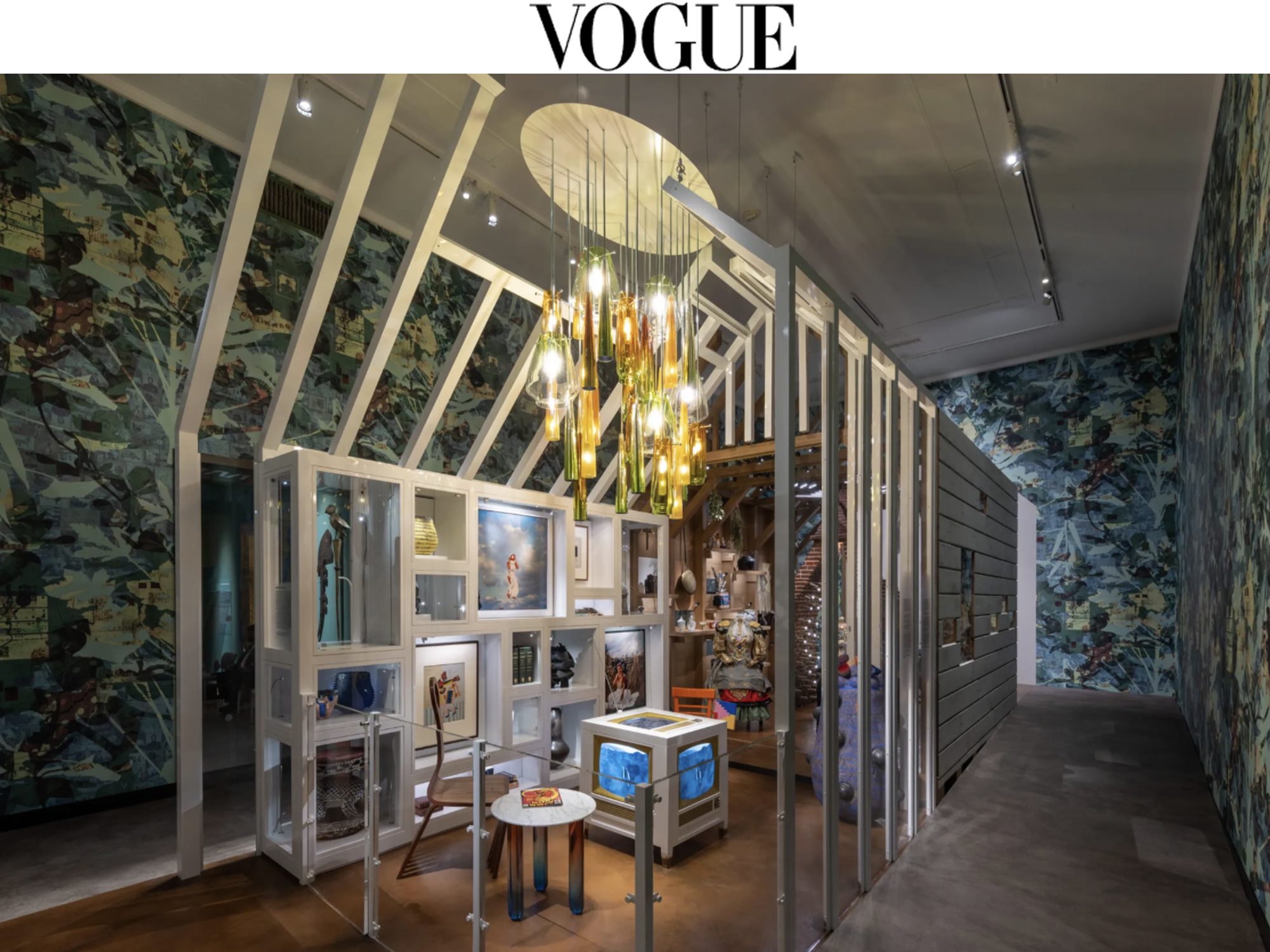By Marley Marius
At the Metropolitan Museum of Art, a place of already uncommon wonder, a special magic pervades the period rooms. From the rectilinear parlor of the Francis W. Little House—a notable example of Frank Lloyd Wright’s organic architecture— in the American Wing, to the gilded splendor of the Varengeville and Paar rooms (among others) in the Wrightsman Galleries, each one is powerfully transportive, effecting an experience not unlike time travel. Yet what is easily overlooked in these spaces is just how much curatorial intervention is involved to make them just so; no room arrives at the Met fully intact. “Every period room is a complete fiction,” says Sarah Lawrence, who joined the Met as the Iris and B. Gerald Cantor Curator in Charge, European Sculpture and Decorative Arts, in 2019. “But the invisibility of the curator’s hand—the pretense of authenticity—is what people love, right?”
With a new variation on the theme, the Met is trying a different approach. Rather than conjure what was (or some version of it, anyway), “Before Yesterday We Could Fly: An Afrofuturist Period Room,” opening to the public this week, asks what if.
The idea for the room sprang from a kind of thought experiment. Max Hollein, the museum’s director, “was really interested in thinking of what a modern or even futuristic period room would be,” Lawrence explains. So she and Ian Alteveer, the Aaron I. Fleischman Curator, Modern and Contemporary Art, met to brainstorm. “We spoke about what would happen if we started with the fiction instead of concealing it, and we used that fiction as an opportunity to bring new narratives into the museum,” she says. With the exception of the Astor Chinese Garden Court (which recreates a Ming-dynasty scholar’s courtyard) and the Damascus Room (a reception chamber from Ottoman-era Syria), the Met’s period rooms have historically centered the lives of the Western white. With the new space, a chance to look outside of that milieu—and, indeed, into the Met’s own backyard— presented itself. In the world of “Before Yesterday We Could Fly,” Seneca Village—the predominantly Black settlement near the Upper West Side of Manhattan that was razed in the 19th century to create Central Park—continued on, and we’re visiting the home of a descendant.

That conceit encouraged, if not required, a kind of “speculative imagination,” Alteveer says, given how little is known about what Seneca Village actually looked like. “There was a 2011 archeological dig, but there are no extant photographs. There’s only pot shards and remnants of foundations and a hand-drawn map that was made in 1856 as a kind of survey to destroy the village.” Its story, he adds, is hardly a unique one; Seneca Village was just one of untold “19th- and 20th-century Black communities that were destroyed either through real violence, like in Tulsa in 1921, or through more benevolent violence like eminent domain.” The Afrofuturist Room rewrites some of that history, collapsing the past, present, and future into a kaleidoscopic vision of Black life—and to help shape that vision, the Met called on Hannah Beachler, the Oscar-winning production designer behind Black Panther and Beyoncé’s Lemonade, and Michelle Commander, the associate director and curator of the Lapidus Center for the Historical Analysis of Transatlantic Slavery at the Schomburg Center for Research in Black Culture. “Once we landed on our narrative, we quickly realized that it was, in a sense, no longer our story to tell,” Lawrence says.
For Commander, whose books include Afro-Atlantic Flight: Speculative Returns and the Black Fantastic, the room’s mission nicely dovetailed with some of her own research. “What I took from our conversations early on was that it was my definition of speculation and speculative thought and the ways that Black people have been able to take control of their bodies and their futures—that really spoke to the kind of project that they wanted to create at the Met,” she says. (The room’s name refers to the visionary writings of Virginia Hamilton.) She also recognized that with the project’s focus on Seneca Village, there was a chance to “lend some humanity to the people of that community in ways that they didn’t have it, in reality, in the early 19th century.”
As the curators have envisioned her, the fictive inhabitant of the room—which combines a wood-beam 19th-century kitchen with a futuristic, Plexiglas-sided living room—is a passionate art collector, and a fascinatingly varied selection of objects supports that idea. Pieces already in the Met’s collection mix with new acquisitions and commissions from the likes of Ini Archibong, Cyrus Kabiru, Roberto Lugo, Zizipho Poswa, Tourmaline, Njideka Akunyili Crosby, and Fabiola Jean-Louis. At the center of the living-room area sits a many-sided television set of Beachler’s own design, programmed with a video by the artist Jenn Nkiru; elsewhere, one sees a linocut of Sojourner Truth, a collage by Lorna Simpson, and a 19th-century vessel by Thomas W. Commeraw, a free Black potter who lived and worked in lower Manhattan. Rather than enter the house directly, viewers walk around it, looking in from either end and through perforations in the walls. “You can really get a full view from both the past into the future and the future into the past,” Alteveer observes.

Lawrence is careful to note that while the ideas behind the room predated the Black Lives Matter protests of 2020, “Before Yesterday We Could Fly” will kick off a string of exhibitions focused on race and social justice. “One of the things that we have been addressing in every curatorial conversation is that this is a different moment, and there has been resonance with this project,” she says. “It is both more complicated and that much more important.” Among the shows to come are “Fictions of Emancipation: Carpeaux Recast” in March, dealing with the abolition of slavery in France, and another about the Harlem Renaissance; but with all of them, “Before Yesterday We Could Fly” included, the idea is not to tell a definitive story of Black history (or futurity) but to raise provocative and complicated questions—beginning with the art on display.
Built into the practice of creatives like Lugo and Jean-Louis, Commander notes, are musings on “how we can reimagine history and historical facts, how we can repurpose them, and how we can highlight certain histories that have long been erased—sometimes intentionally—and bring them forward in these absolutely stunning ways,” she says. It’s important, timely work—and long may it continue.
“Before Yesterday We Could Fly: An Afrofuturist Period Room” is open at the Metropolitan Museum of Art from November 5.










